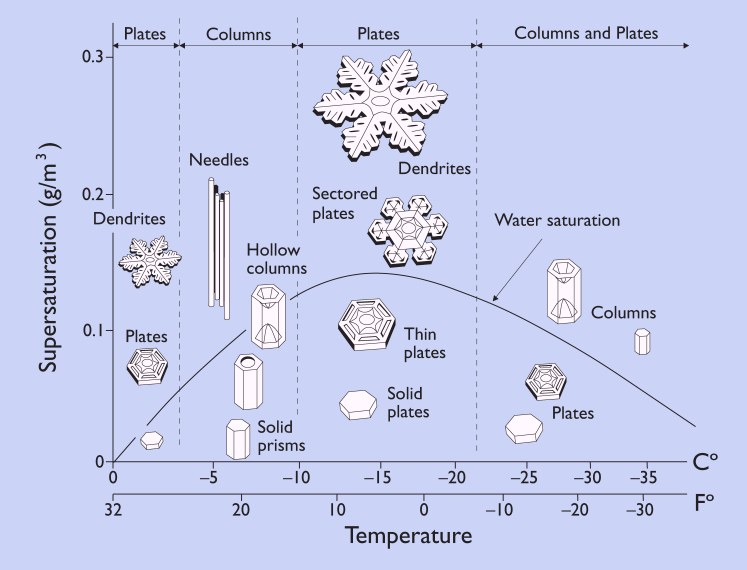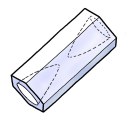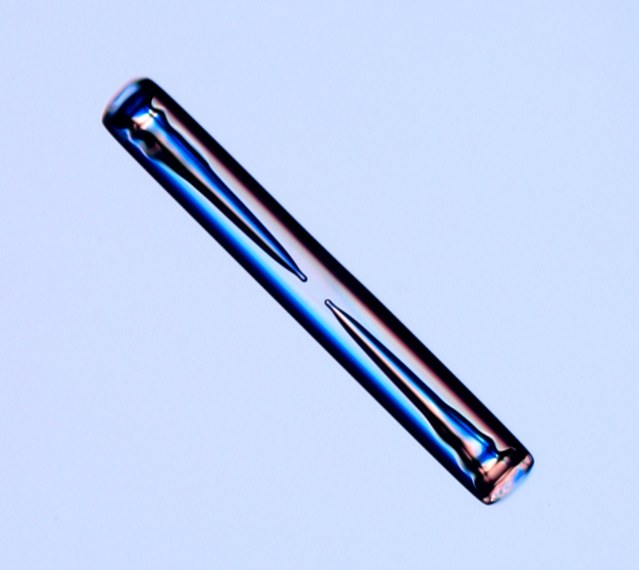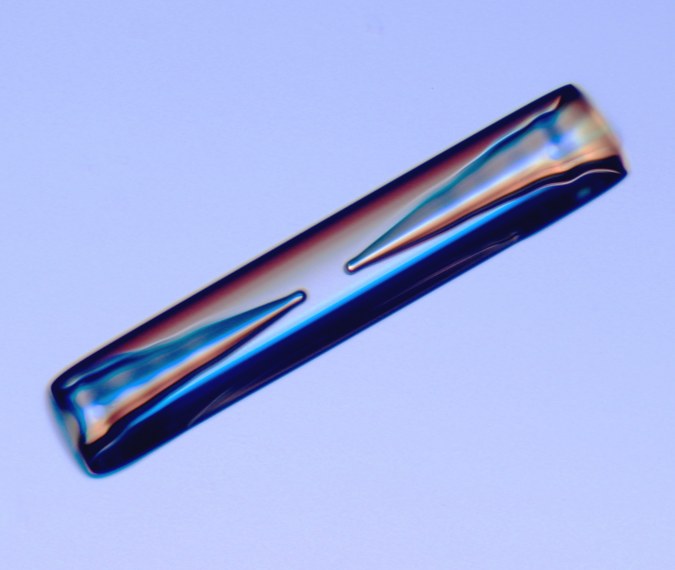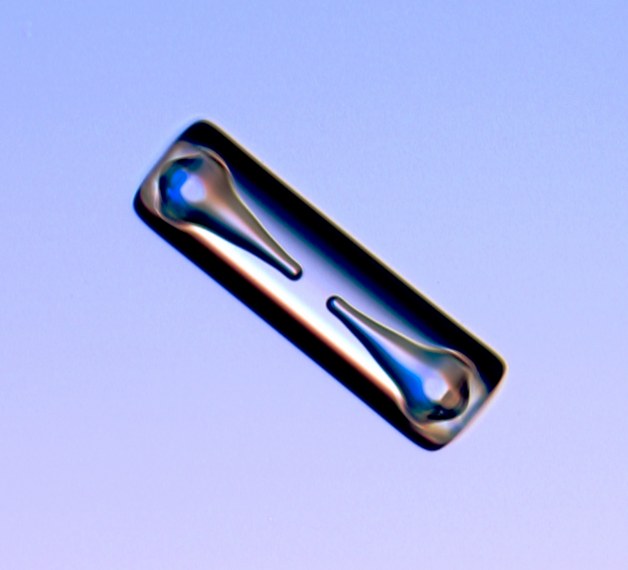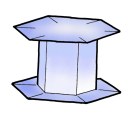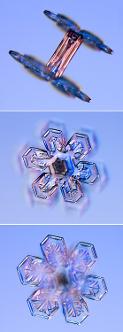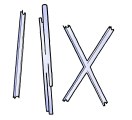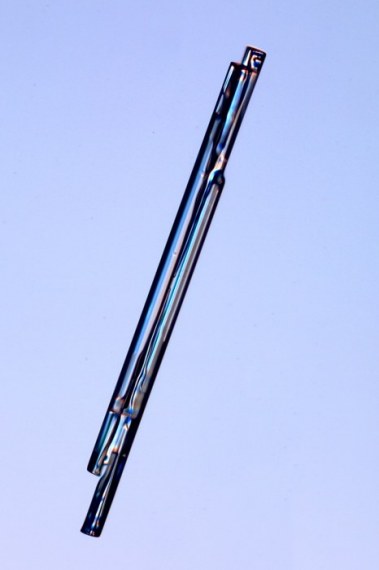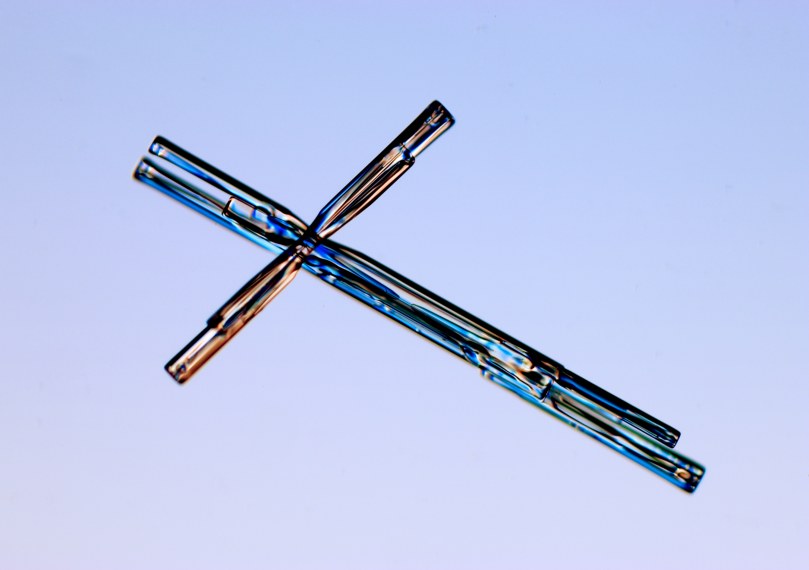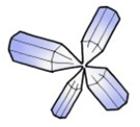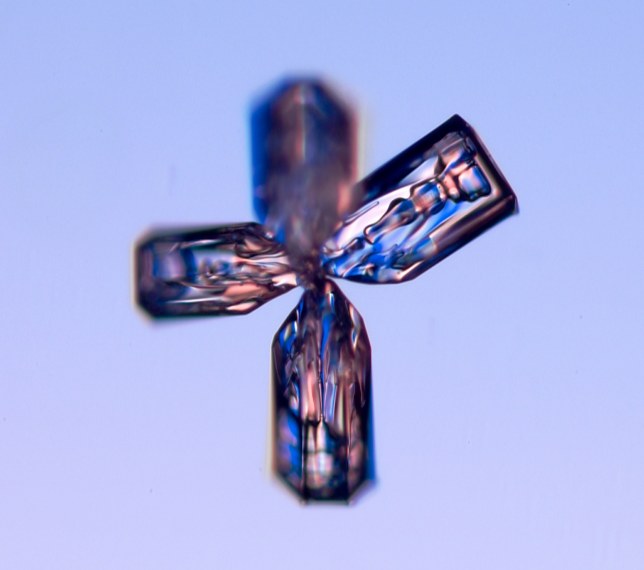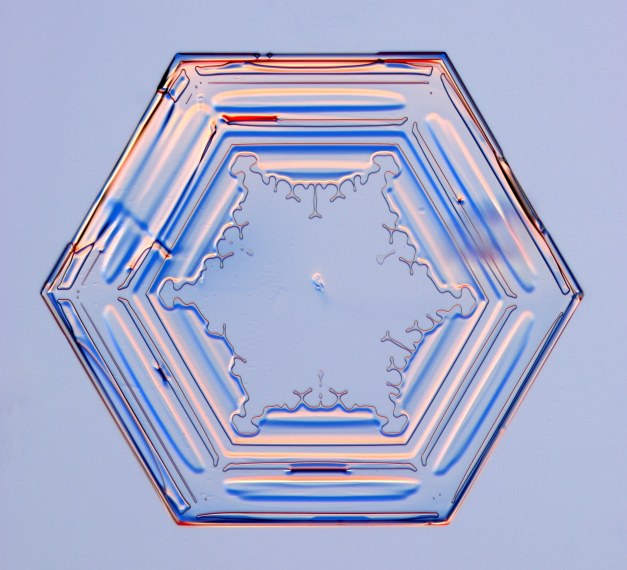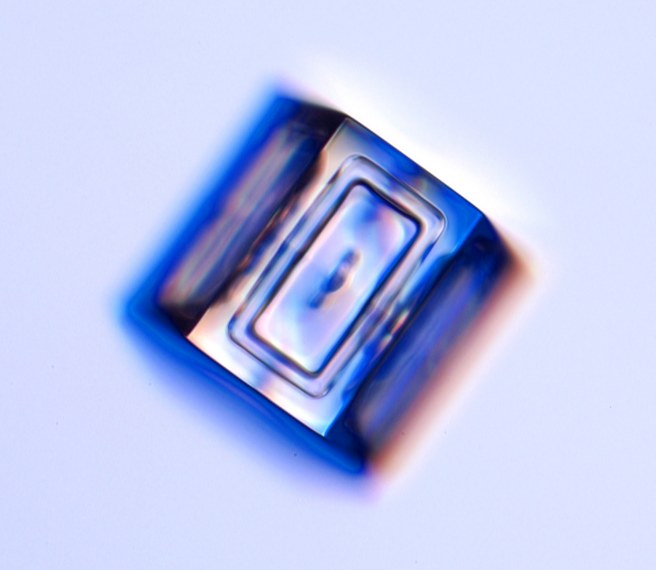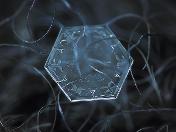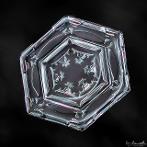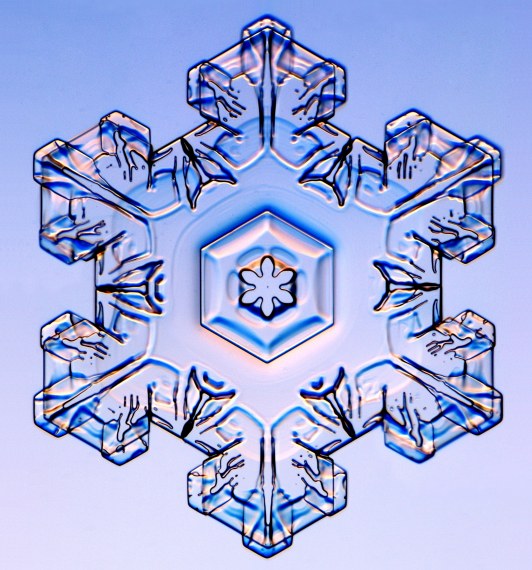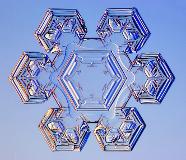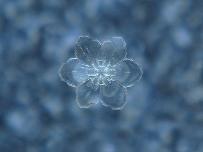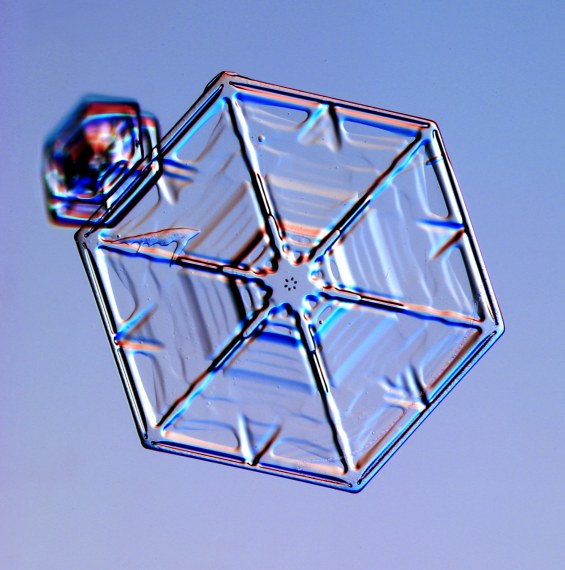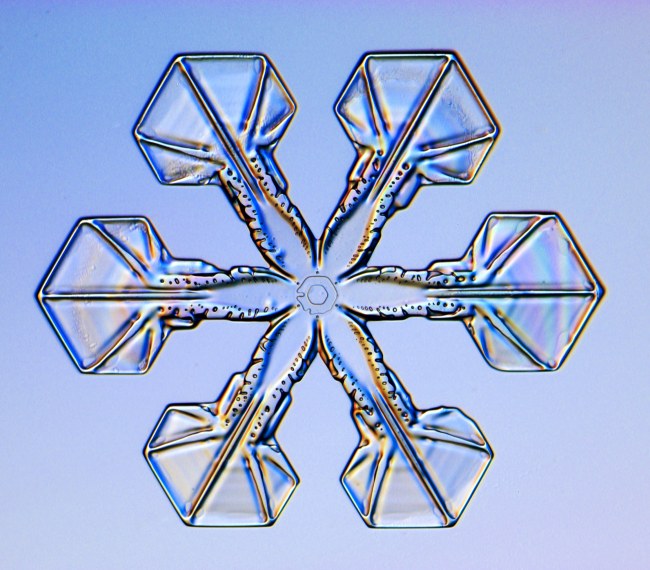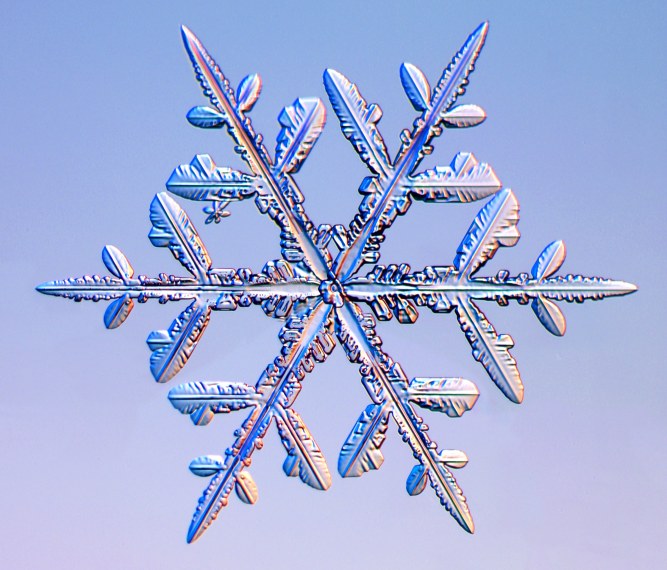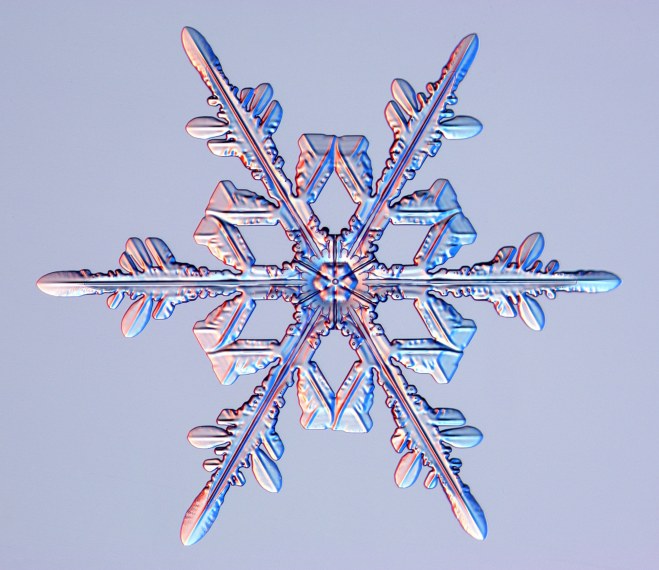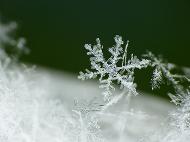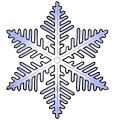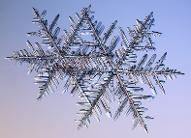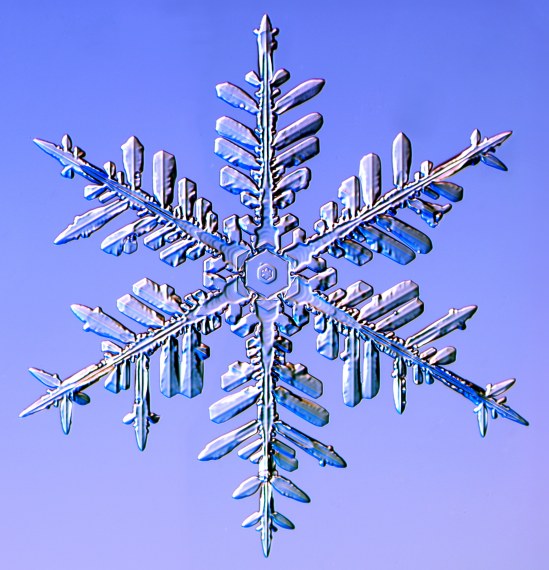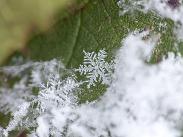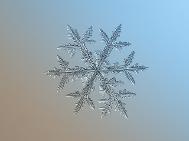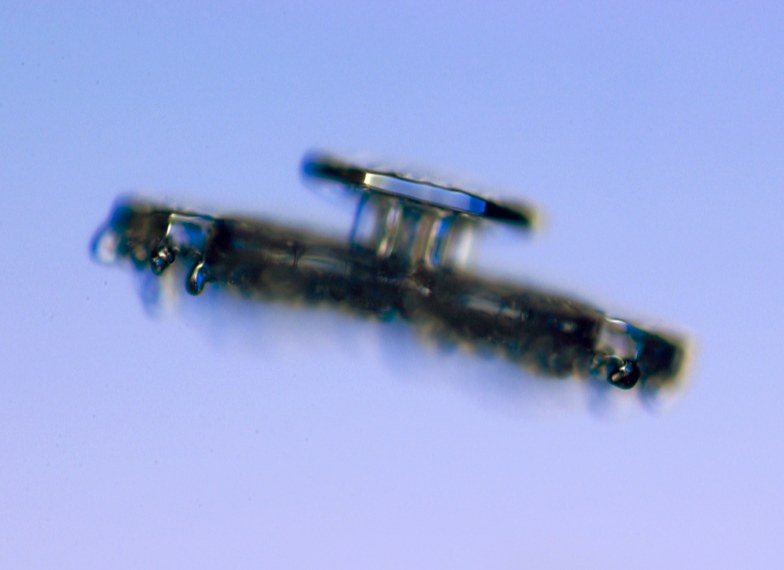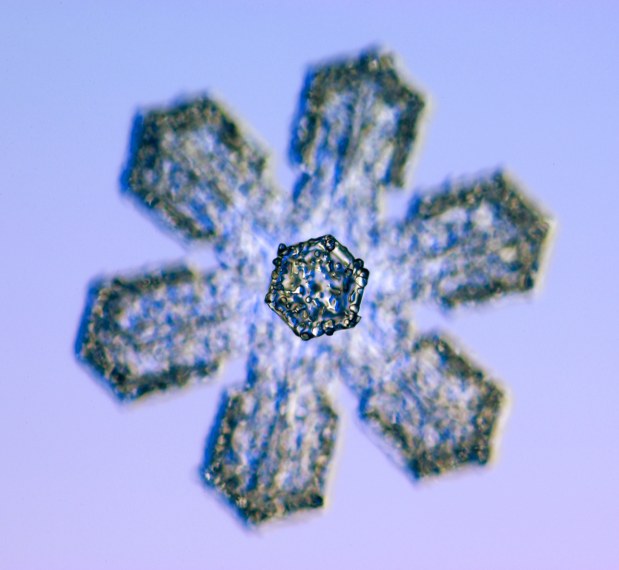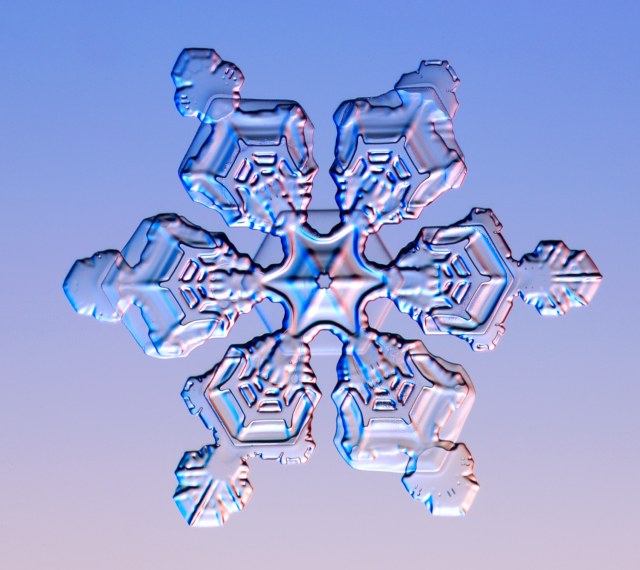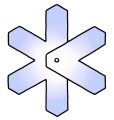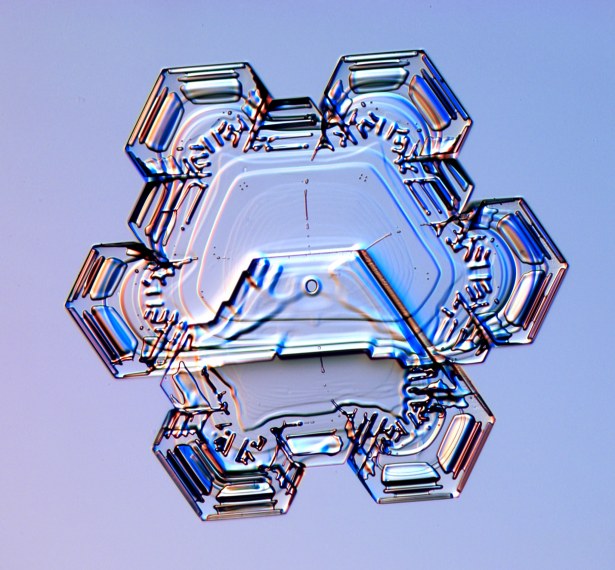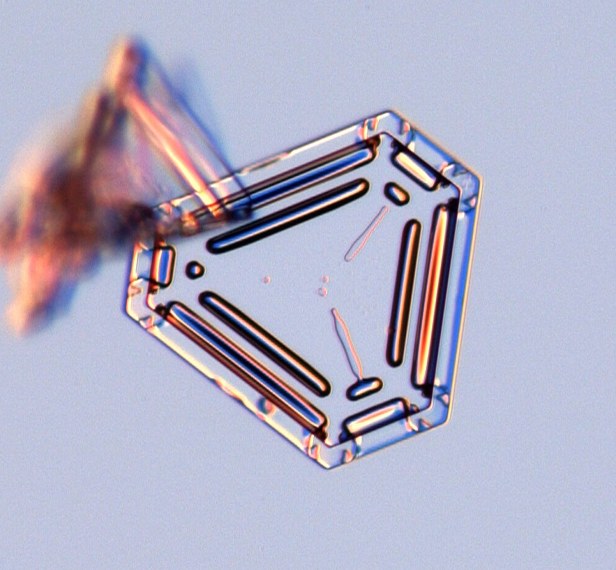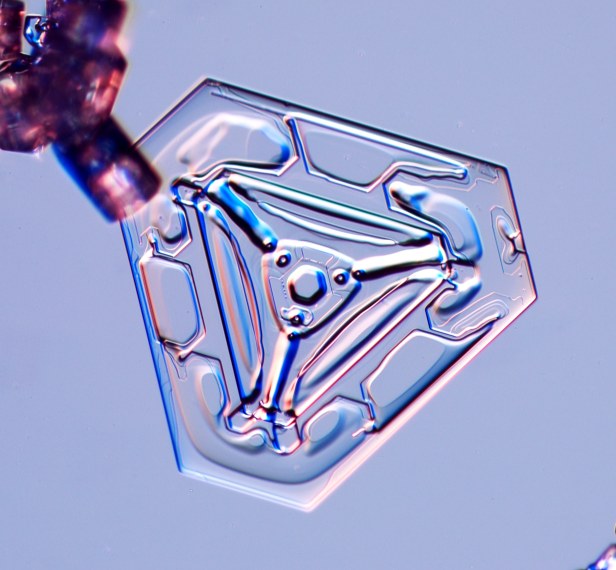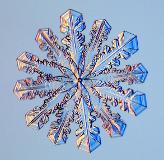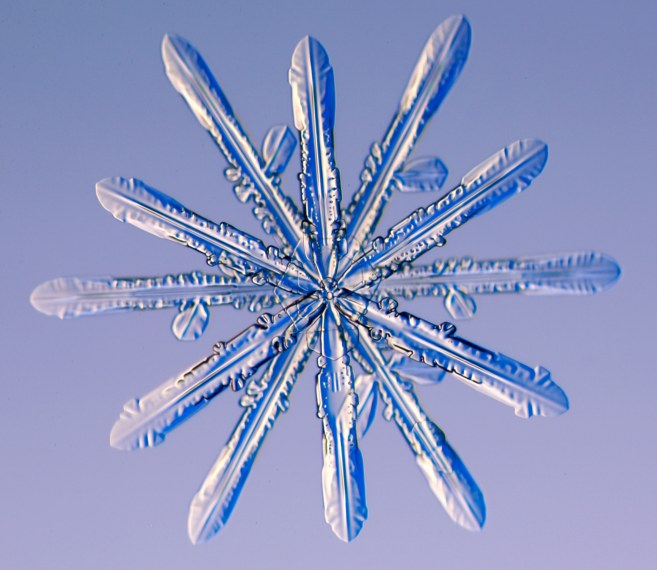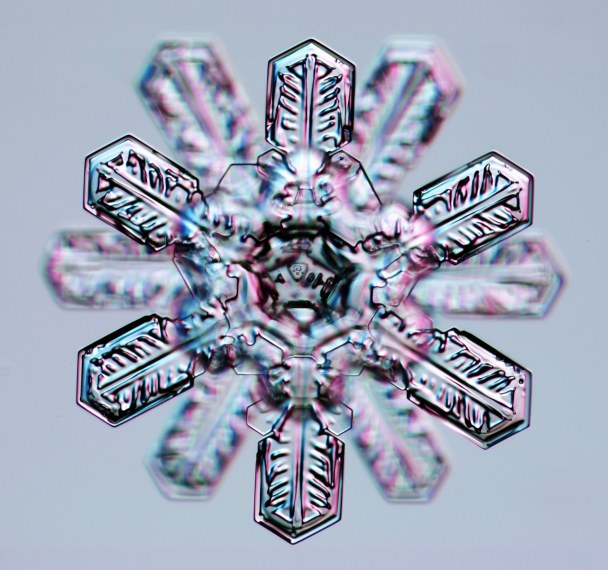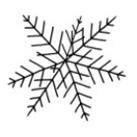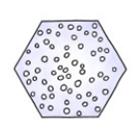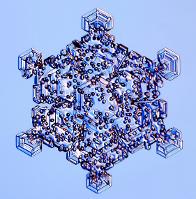Column Snowflakes
Column snowflakes will form anywhere between -5 and -25 degrees Celsius when the air is dry and they come in two types. Hollow columns and Capped columns.
Hollow Columns
Hexagonal columns often form with conical hollow regions in their ends, and such forms are called hollow columns. It takes the form of a hexagonal tube with each end hollowed out. The naked eye, however, cannot detect this hollow portion without the aid of a magnifier. These crystals are small. Note how the two hollow regions are symmetrical in each column. Sometimes the ends grow over and enclose a pair of bubbles in the ice, as seen in this picture. This shape is shown near -5°C. And more the humidity (supersaturation) is high, more the shape becomes complex. |
Capped Columns
When column snowflakes form in the upper, drier region of a cloud then pass through a lower cloud with more moisture, a plate will form on both ends of the column, creating a capped column snowflake. These crystals first grow into stubby columns, and then they blow into a region of the clouds where the growth becomes plate-like. The result is two thin, plate-like crystals growing on the ends of an ice column. In other words, this happens when a columnar snowflake is blown into an area of different temperature. Capped columns don't appear in every snowfall, but you can find them if you look for them. |
Needles
On your sleeve these snowflakes look like small bits of white hair. One of the amazing things about snow crystals is that their growth changes from thin, flat plates to long, slender needles when the temperature changes by just a few degrees. Why this happens remains something of a scientific mystery. |
Bullet Rosettes
The nucleation of an ice grain sometimes yields multiple crystals all growing together at random orientations. When the different pieces grow into columns, the result is called a bullet rosette. These polycrystals often break up to leave isolated bullet-shaped crystals. Sometimes a bullet rosette can become a capped rosette, as shown in the example at the far right.
|
Plates Snowflakes
When the temperature drops between -10 and -20 degrees Celsius and there isn't enough moisture in the air to form a star snowflake, plate snowflakes form. Six broad arms make up the shape of these stellar plate snowflakes, while the intricate and symmetrical decorations form on their faces. These are basically half-formed stars. Plates are in the process of growing into stars but are in a crisis where there is no water vapor in the sky to help them crystallize and form the limbs of the star. When the pointed ridges of stellar plates become prominent, the snowflakes fall into the category of sectored plates.
Simple Primes
| A hexagonal prism is the most basic snow crystal geometry. Depending on how fast the different facets grow, snow crystal prisms can appear as thin hexagonal plates, slender hexagonal columns (shaped a lot like wooden pencils), or anything in between. Simple prisms are usually so small they can barely be seen with the naked eye. |
Stellar Plates
| These common snowflakes are thin, plate-like crystals with six broad arms that form a star-like shape. Their faces are often decorated with amazingly elaborate and symmetrical markings. Plate-like snowflakes form when the temperature is near -2 C (28 F) or near -15 C (5 F). |
Sectored Plates
| Stellar plates often show distinctive ridges that point to the corners between adjacent prism facets. When these ridges are especially prominent, the crystals are called sectored plates. The simplest sectored plates are hexagonal crystals that are divided into six equal pieces, like the slices of a hexagonal pie. More complex specimens show prominent ridges on broad, flat branches. |
Stellar Dendrites
| Dendritic means "tree-like", so stellar dendrites are plate-like snow crystals that have branches and sidebranches. These are fairly large crystals, typically 2-4 mm in diameter, that are easily seen with the naked eye. Stellar dendrites are clearly the most popular snow crystal type, seen in holiday decorations everywhere. You can see these crystals for yourself quite well with just a simple magnifier. |
Fernlike Stellar Dendrites
| Sometimes the branches of stellar crystals have so many sidebranches they look a bit like ferns, so we call them fernlike stellar dendrites. These are the largest snow crystals, often falling to earth with diameters of 5 mm or more. In spite of their large size, these are single crystals of ice -- the water molecules are lined up from one end to the other. The best powder snow, where you sink to tour knees while skiing, is made of stellar dendrites. These crystals can be extremely thin and light, so they make a low density snowpack. |
Double Plates
A double plate is basically a capped column with an especially short central column. The plates are so close together that inevitably one grows out faster and shields the other from its source of water vapor. The result is one large plate connected to a much smaller one. These crystals are common -- many snowflakes that look like ordinary stellar plates are actually double plates if you look closely. |
Split Plates and Stars
These are forms of double plates, except that part of one plate grows large along with part of the other plate. The picture at right shows all eight ways to make a split star. Split plates and stars, like double plates, are common but often unnoticed. Look at this picture. Note how in each case the crystals are connected in the center with short axles. |
Triangular Crystals
Plates sometimes grow as truncated triangles when the temperature is near -2 C (28 F). If the corners of the plates sprout arms, the result is an odd version of a stellar plate crystal. These crystals are relatively rare.
Surprisingly, no one knows why snow crystals grow into these three-fold symmetrical shapes. (Note however that the molecular structure of triangular crystals is no different from ordinary six-sided crystals. The facet angles are all the same. |
12-Sided Snowflakes
Sometimes capped columns form with a twist, a 30-degree twist to be specific. The two end-plates are both six-branched crystals, but one is rotated 30 degrees relative to the other. This is a form of crystal twinning, in which two crystals grow joined in a specific orientation. These crystals are quite rare, but s ometimes a snowfall will bring quite a few. The picture at the far right shows a 12-sider where the two halves are widely separated. |
Radiating Dendrites
When the pieces of a polycrystal grow out into dendrites, the result is called a radiating dendrite (also called a spatial dendrite). The first example on the right shows radiating plates. The second example shows a fernlike stellar dendrite with two errant branches growing up out of the main plane of the crystal. |
Rimed Crystals
Clouds are made of countless water droplets, and sometimes these droplets collide with and stick to snow crystals. The frozen droplets are called rime. All the different types of snow crystals can be found decorated with rime. When the coverage is especially heavy, so that the assembly looks like a tiny snowball, the result is called graupel.
The first two pictures at right have relatively light rime coverage. The final example is completely covered with rime, but you can still see the six-fold symmetry of the underlying stellar crystal. |
